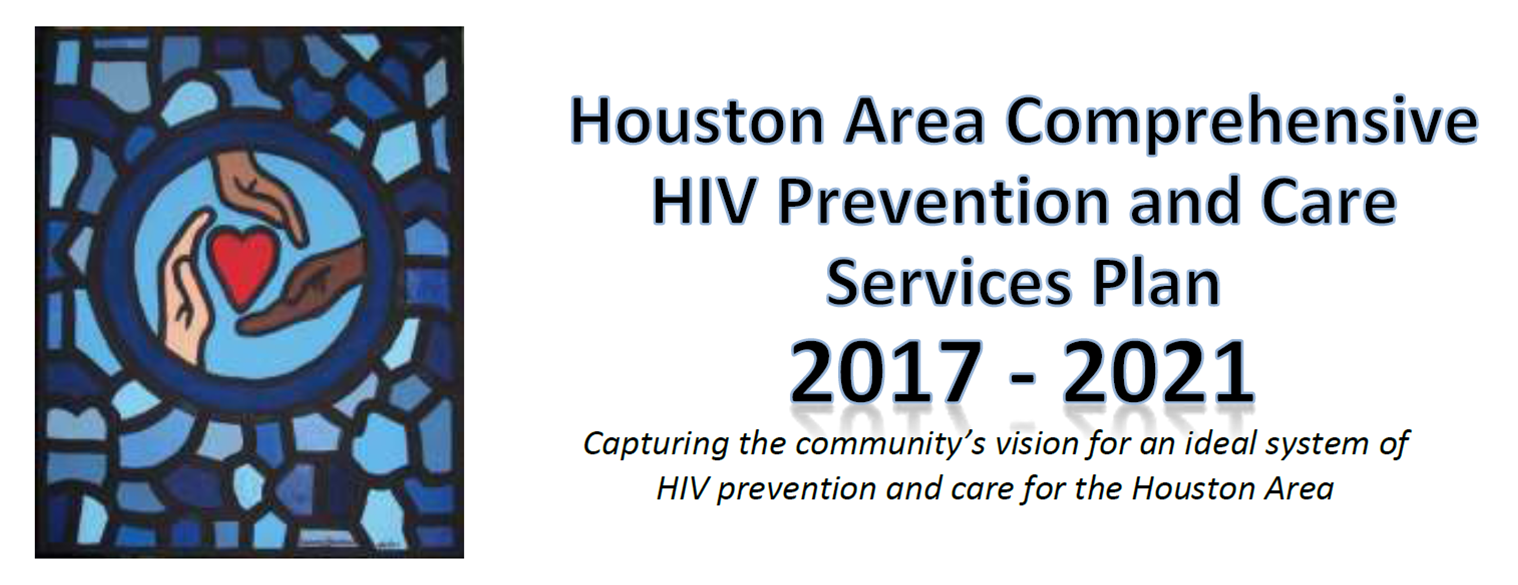|
Return to 2017 Comprehensive Plan What is the Comprehensive Plan? How the Plan was Developed Downloads (pdf) |

How the Plan Was Developed When the Centers for Disease Control and Prevention (CDC) and Health Resources and Services Administration (HRSA) issued new joint guidance for the 2017 comprehensive jurisdictional HIV plan in June 2015 calling for greater coordination between HIV prevention and care services planning, the Houston HIV community was well equipped with the its first-ever joint Houston Area Comprehensive HIV & Care Services Plan (2012-14, extended through 2016), to serve as a framework. However, since creation of the last plan, changes in local initiatives like End New Diagnoses Houston, advances such as Treatment as Prevention (TasP) and PrEP, and implementation of the Affordable Care Act (ACA) necessitated creation of a new plan identifying specific strategies to sustain, scale-up, shift (in terms of new priorities or needs), or shore-up the HIV prevention and care services system. Combining the requirements of the guidance, the National HIV/AIDS Strategy Updated for 2020, and the existing comprehensive plan development structure, Houston’s unique organizational structure for developing the plan was reconvened under renewed leadership and populated with prevention and care stakeholders and consumers. This structure included four strategy-specific Workgroups, a Workgroup charged with monitoring and evaluation, and a Leadership Team to guide the process as a whole. From October 2015 to June 2016, volunteers and staff, people living with and at risk for HIV/AIDS, and other concerned community members convened at least monthly to discuss the essential elements of an ideal system of HIV prevention and care for the Houston Area. They identified the following:
Concurrence and approval of the 2017 Comprehensive Plan goals, objectives, benchmarks, and activities was sought from both local HIV Planning Bodies. In the end, over 90 individuals (many who were people living with HIV) and 57 agencies and other organizations contributed to the process. Click here for a complete list of individual and agency contributors. |